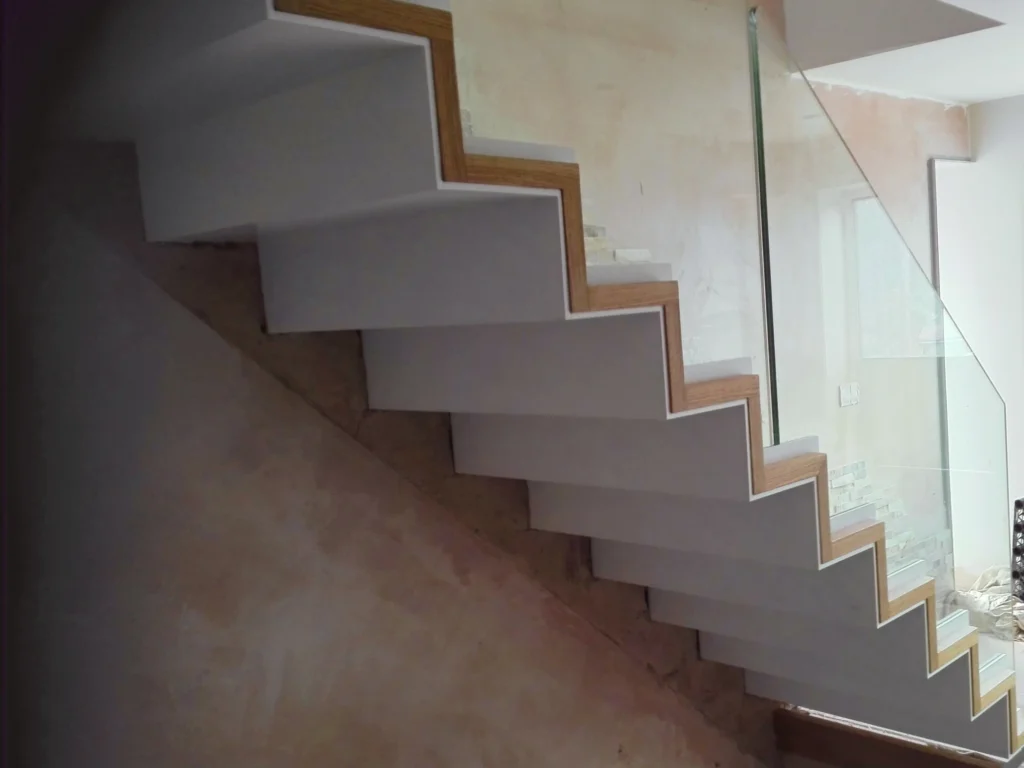A Complete Guide to Different Types of Staircases
Choosing the right staircase for your home or business is crucial in defining the aesthetics, functionality, and overall appeal of your interior. Whether you prefer traditional or modern designs, there are multiple staircase options available, each offering unique characteristics and benefits. From glass and steel to wooden structures, the possibilities are endless. If you're looking for a bespoke staircase in the UK, there are numerous design choices tailored to suit your specific needs. Below is a complete guide to the different types of staircases you can consider for your space.
Stairs with Closed Stringers
Stairs with closed stringers are designed to enclose the edges of the steps between two stringer boards. This provides a clean and sleek appearance while offering additional structural stability. The enclosed sides create a polished and seamless look, making them an ideal choice for both contemporary and traditional interiors.
Cut Stringer Stairs
Cut stringer staircases are crafted by cutting the stringers in such a way that the treads sit visibly on top of the structure. This design offers an open and decorative look, making it an excellent choice for those who want to highlight the beauty of their staircase as a focal point in their home or office.
Spiral Stairs
Spiral staircases are space-saving solutions that add a sophisticated touch to interiors. These staircases are available in various materials, including timber, glass, and steel. The modular construction allows for customization in diameters ranging from 1 meter to 2.4 meters. Spiral stairs work well in both modern and traditional settings, offering a stylish and functional way to connect different levels.
Central Stringer Stairs
A popular choice for modern homes, central stringer stairs in the UK feature a single, heavy-duty center beam that supports the treads. The central stringer can be made from steel or wood, giving a sleek and minimalist aesthetic. This design is perfect for creating an airy, open-plan look while maintaining a high level of durability and strength.
Zig Zag Stairs
Zig Zag stairs in the UK have become increasingly popular due to their self-supporting structure and striking visual appeal. The tread and riser follow a zig-zag pattern, creating a contemporary and stylish design. This type of staircase is perfect for those looking to make a bold architectural statement while ensuring strength and stability.
Cantilevered Stairs
Often referred to as floating stairs, cantilevered staircases create the illusion of weightless treads suspended in mid-air. This design is ideal for modern interiors where minimalism and elegance are key. The unique floating effect makes it a standout feature in any home or commercial space.
Helical (Curved) Stairs
Helical staircases, also known as curved stairs, feature a flowing arc that seamlessly guides users between levels. Unlike spiral staircases, curved staircases do not require a central column, making them more flexible in design. They are often found in grand entrances of private residences and commercial office spaces, providing a luxurious and elegant aesthetic.
Bespoke Staircase in the UK
If none of the standard designs meet your specific needs, you can opt for a bespoke staircase in the UK. Custom staircases allow homeowners and designers to tailor the structure to fit unique spaces and design preferences. Whether incorporating glass, wood, or steel elements, a bespoke staircase offers limitless possibilities in terms of style, functionality, and personalization.
Conclusion
Selecting the right staircase involves considering both design and functionality. Whether you are looking for the modern appeal of central stringer stairs in the UK, the bold statement of Zig Zag stairs, or the elegance of a bespoke staircase in the UK, Vonka Stairs provides the perfect solution to match your style and needs. With expert craftsmanship and high-quality materials, you can transform your staircase into a stunning architectural feature that enhances the entire space.



Comments
Post a Comment